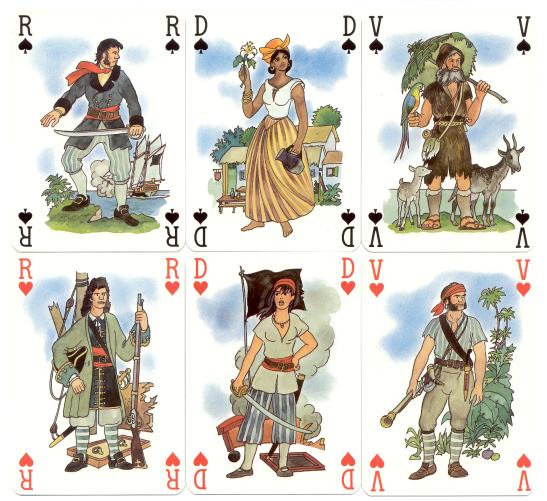
-THE FRENCH & THE
SEA-
-2-
In the 16th and 17th century on a local scale the owner of the boat,
the captain and the crew were close and the corsaires were almost like a family.
Their boats were light, up to 50 tons, just like their arms. They went for small
commercial ships and sometimes a larger boat, when it was single and damaged by
storms.
On a larger scale powerful boats were necessary to attack whole convoys.
Frigates, bigantins with a crew of more than a hundred men, heavily armed with
canons. The crew was often international. The corsaires sometimes went to sea for
months, far out on the Atlantic ocean or the Northsea or hanging out near enemy
ports.

In 1493, only a few weeks after Columbus had returned, pope
Alexander VI divided the world into two parts at the meridian that was 100 sea miles
west of the Flores de Acores island. Everything to the west was for
Spain and everything to the east was for Portugal. A year later the two
countries moved this meridian, thus giving Brazil to the Portuguese.
To secure all the transports of
valuable goods, spices from the Far East, gold from Africa and silver from
Mexico, the Spanish and Portuguese needed a tremendous naval force.
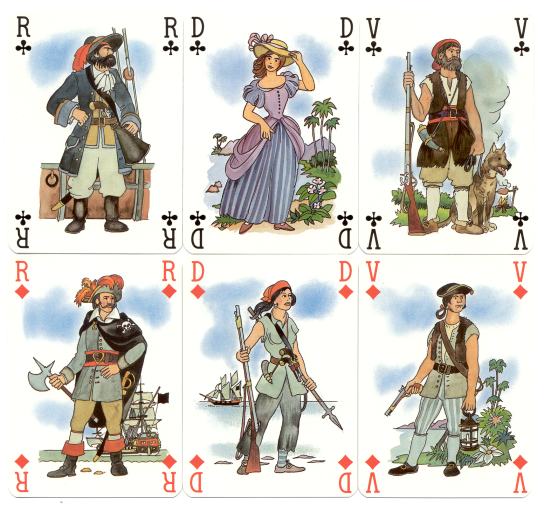
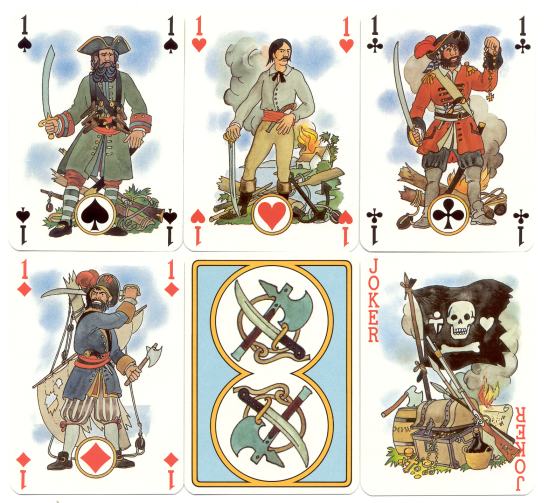
In France François I had plans to break the power of the Spanish and Portuguese, but didn't have the finances for a great fleet. He used the Breton and Normandy corsaires for the Atlantic route, where the Spanish often transported gold and silver to pay their troops in Holland. Dutch and French corsaires also started operating in the Pacific Ocean. Although heavy losses were taken the Spanish remained a naval power almost throughout the 16th century.
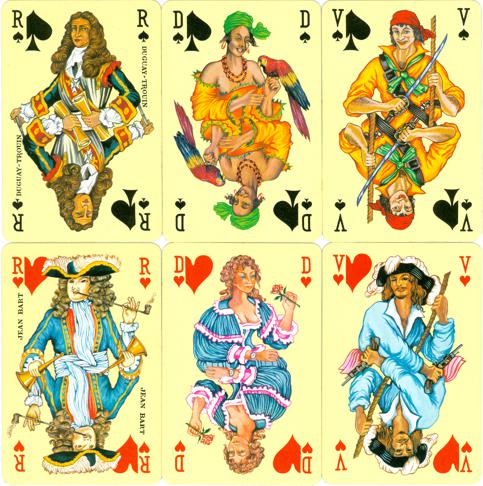
Some of the more French renowned pirates operated under the protection of the king. Duquay-Trouin, Jean Bart, Tourville and Surcouf were among them.
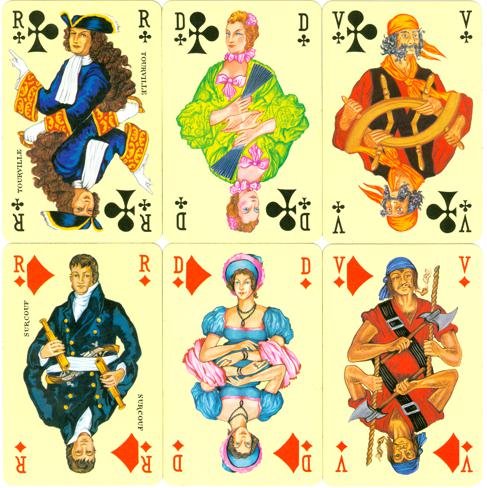
This deck was printed by Boéchat Frères (Bordeaux), illustrated by Henri
Simoni, 1985.
In the beginning of the 17th century piracy had spread from the European coasts to Africa and even to the Caribbean Sea. When the Spanish withdrew from Turtle island, Jamaica and several smaller islands in the region, bands of ex-slaves, prisoners and corsaires were formed that occupied single islands and made them their home-base. They formed small communities and from the original Indian inhabitants they learned the art of "boucan", a way to conserve meat by salting it. The name buccaneer is used for these pirates in the Caribbean.
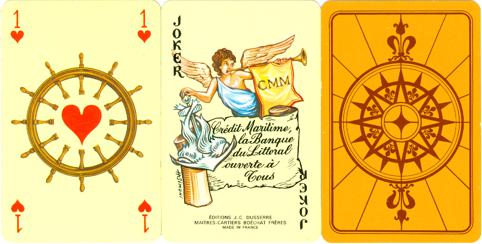
"Flibustiers" is a name that will pop up in the
next deck. It's another French name for pirates, but more in the sense of
freebooters (Anglicization of the Dutch "vrijbuiter").
-0- -1-
-3- -4- -5-
-6- -7- -8-
-9-
-10- -11- -12- -13-
-14-
XPOHOME